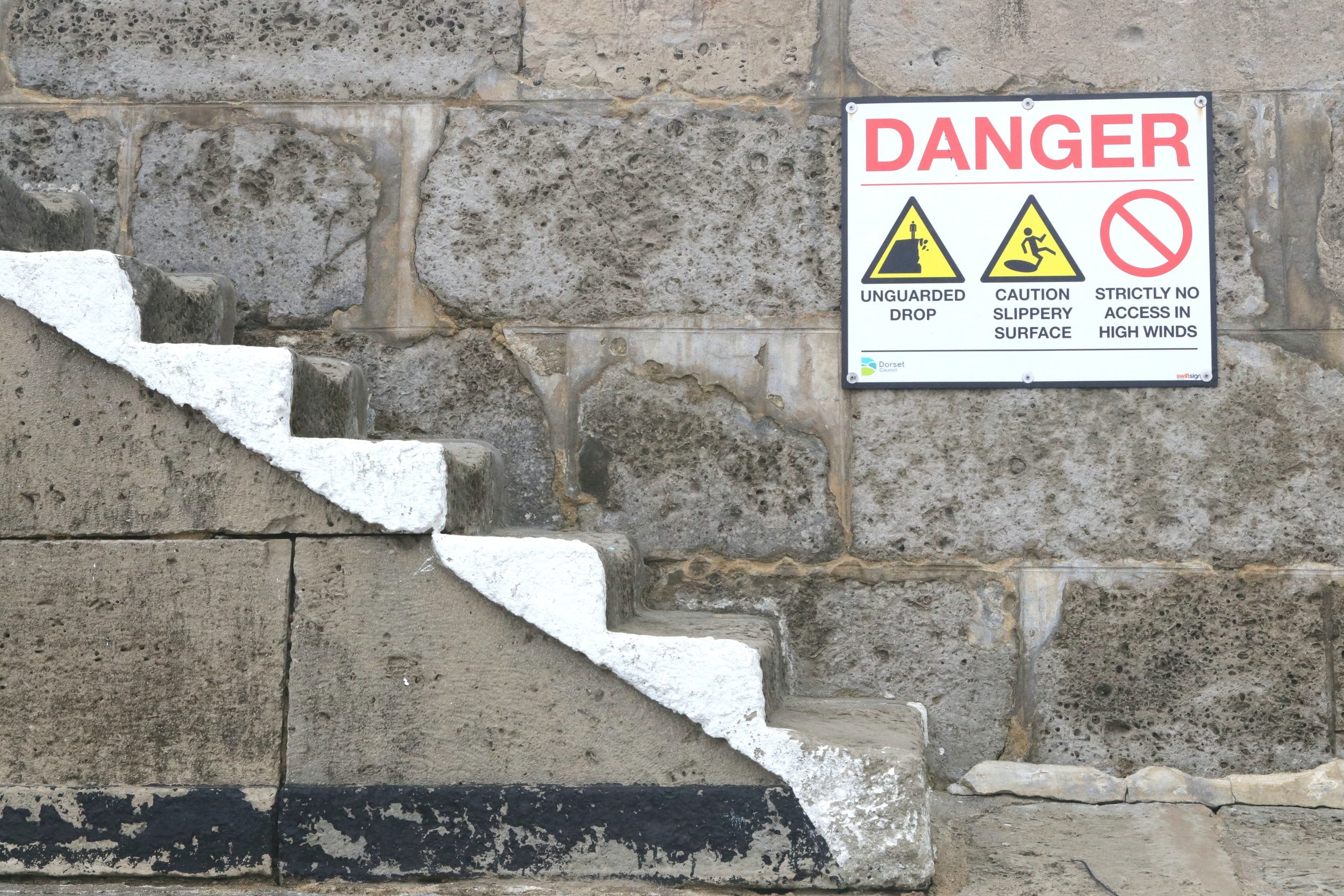Risk assessment
The East Side Youth Centre Risk Assessment Matrix is here.
Risk Assessment requirements are complied at all times with due regard to Health and Safety standards.
The key to all Safety Management is to identify the hazards, assess the risks and then control hazards inherent in the task and working environment. This can be achieved by doing one of the following:
ELIMINATION removing the hazard completely.
ENGINEERING CONTROL using less of the hazardous substance, guarding against the hazard, isolating or containing the hazard.
ADMINISTRATIVE CONTROL issuing a procedure, stating do’s and don’ts, training inspections and audit.
PERSONAL PROTECTIVE EQUIPMENT this is the last resort.
If the hazard cannot be eliminated the degree of control will depend on the severity of the hazard and the likelihood of it happening, as well as the cost in monetary and other terms (so far as is reasonable and practicable).
An approved Risk Assessment recording system is used, comprising:
Record Sheet
Assessment Sheet
Risk Assessments are carried out as follows:
Potential to cause harm (hazards) identified and recorded
Is anyone vulnerable
Determination of what can cause hazard to occur
Decide how likely somebody might be harmed and how
Consider what controls are already in place
Evaluate risks arising from the potential to cause harm and decide if existing precautions are adequate or whether more should be done
Findings are recorded
Assessment is reviewed periodically or following changes
Risk assessment in practice
The risk assessment will take into account the nature of the undertaking and the type and extent of the hazards and risks. Part of the risk assessment is to decide if any person is vulnerable.
Office working normally presents a few or low risk hazards and sufficient risk assessment can be a very straightforward process on judgement and requiring no specialist skills or complicated techniques. If there are no hazards, there are no risks.
However, staff that are carrying out indoor and outdoor activities and events away from the office should make a suitable and sufficient written Risk Assessment, which should be retained as a record for inspection or further use at a later date.
The record shall be in writing using the Risk Assessment Form provided and should include the significant hazards identified in the assessment, the control measures in place and the extent to which they control the risks and the population, which may be affected by these significant risks or hazards.
Standard operating procedures
A Standard Operating Procedure (SOP) is used for safety in relation to venues, programmes and people as appropriate. This SOP ensures:
• RIDDOR (reporting and recording of accidents and dangerous occurrences) is complied with.
• All events implemented by the Board, staff or volunteers include, as standard, arrangements for the health, safety and welfare of participants, including, for example, egress in case of fire and appropriate first aid support.
ESYC meets insurance requirements and has:
• Public liability
• Employer’s liability
Annex A – Standard Operating Procedures
ESYC uses the following SOPs in association with its Health and Safety Policy. It is based on the three key areas of:
People
Places
Programmes
People
• All staff undertake to maintain their personal and professional development whilst in the employment of the organisation, and ensure that they remain suitably qualified to undertake the requirements of their post.
• All staff must be suitably qualified to meet both organisation and other member/customer requirements. This will be checked and verified before any offer of work is made.
• In the case of outdoor development programmes, all staff must hold the relevant NGB award.
• The lead youth worker for a particular project or programme is responsible for health and safety for that programme. They are responsible for ensuring a risk assessment is carried out, as necessary, reporting of any accidents or incidents, and ensuring health and safety matters are identified at the start of any activity, event or intervention. This includes first aid, risks to health and safety and emergency procedures.
• In order to ensure those who are not employees are protected, all volunteers are also made aware of the organisation’s policy and commitment to health and safety and advised on health and safety standards/requirements. This includes emergency procedures and recording and reporting of accidents and dangerous incidents.
Places
• Venues used by the organisation must be suitable for the programme, number of people and nature of the activity, and comply with access requirements.
• Venues must meet current Health and Safety standards, and be checked in advance of an event through a Risk Assessment process, in co-operation with the provider, where appropriate.
• Using Emergency Procedures - venues used invariably belong to others. As such, their emergency procedures are always learned and used. In addition, information about their first aid arrangements is always verified before the start of an intervention or activity, and any procedures for reporting/recording accidents.
• Place of Work – Staff work at the ESYC office and also at various other venues and recognise their duty to protect themselves and each other. An assessment of risk has been carried out for the ESYC office base and employees accept their responsibility for its safety and that of the equipment in their care. They have read the relevant HSE Health and Safety leaflet regarding the law.
• Outdoor development - only AALA licensed venues are used. They are required to provide their certificate number and own statement of health and safety as part of the booking/contracting process. This ensures all legislative requirements are met and standards pertaining to equipment, clothing, activities and risk management in the outdoors are covered.
• Due to the nature of its work, there is very little cause for supplying/using protective clothing. ESYC recognises that there are requirements under the 1992 Personal Protective Equipment at Work regulations, which govern this issue. Individuals will always be consulted if protective clothing needs to be worn.
• As a small organisation employing 9 people ESYC has a low health and safety risk. It does not use any hazardous substances in its work or at places of work.
Programmes
• All projects and programmes are designed to ensure health and safety matters are identified at the start of any intervention. This includes indication of procedures to be followed in emergencies and hazards to participants at the time of the event.
• The organisation ensures that all programmes are designed, developed and delivered within an appropriate health and safety framework.
Annex B – Investigating Health and Safety Incidents
ESYC is a small organisation and it has a low health and safety risk. It recognises that however stringent the procedures are that are in place, accidents do happen. It will make sure that in using its SOP it is able to deal with accidents, and also, where necessary investigate them.
• Every injury, however minor, is reported and recorded in the organisation’s “accident book”. Records are kept on a computer file. This ensures ESYC is able to monitor if it is prone to a particular type of risk. If this is established, the organisation will implement measures to reduce it.
• The details documented when an accident is reported are: name, age, employee status, job title, the injury details and the date, time and place the accident occurred.
• Reporting accidents to RIDDOR will be used if applicable using form F2508. Contact details when reporting a work related accident are as follows:
By Letter – For death and major injuries: Incident Contact Centre, Caerphilly Business Park, Caerphilly, CF83 3GG, WALES.
By Internet – for all other reportable accidents: www.riddor.gov.uk
By email – riddor@natbrit.com

